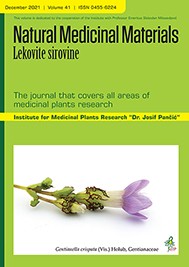Department of Physiology, University of Calabar , Calabar , Nigeria
Biomedicinal Research Centre, Forestry Research Institute of Nigeria , Ibadan , Nigeria
Department of Physiology, University of Calabar , Calabar , Nigeria
Department of Physiology, University of Calabar , Calabar , Nigeria
Uvaria chamae is a tropical medicinal plant with documented antimicrobial and antimalarial activities. Agents with these activities are known to impair fertility. This study investigated the antifertility effects of ethanolic extract of U. chamae on male albino Wistar rats. Two different oral doses; 56.6 mg/kg body weight and 113.2 mg/kg body weight of the extracts were administered to low dose and high dose group, respectively. A third group served as control and received 2 mL of distilled water. There were five animals in each group. Administration lasted six weeks after which animals were sacrificed and samples collected. Results showed that sperm count, sperm morphology and semen pH were not affected (P>0.05) by the extract. Sperm motility (55.65 %) and viability (64.38 %) were however decreased (P<0.05) by high doses of the extract. Histopathology of testicular tissues also showed no difference across the groups. U. chamae thus impair fertility in vivo especially at high doses.
This is an open access article distributed under the Creative Commons Attribution License which permits unrestricted use, distribution, and reproduction in any medium, provided the original work is properly cited.

The statements, opinions and data contained in the journal are solely those of the individual authors and contributors and not of the publisher and the editor(s). We stay neutral with regard to jurisdictional claims in published maps and institutional affiliations.